Home>Garden Essentials>What Greenery Goes With Tulips
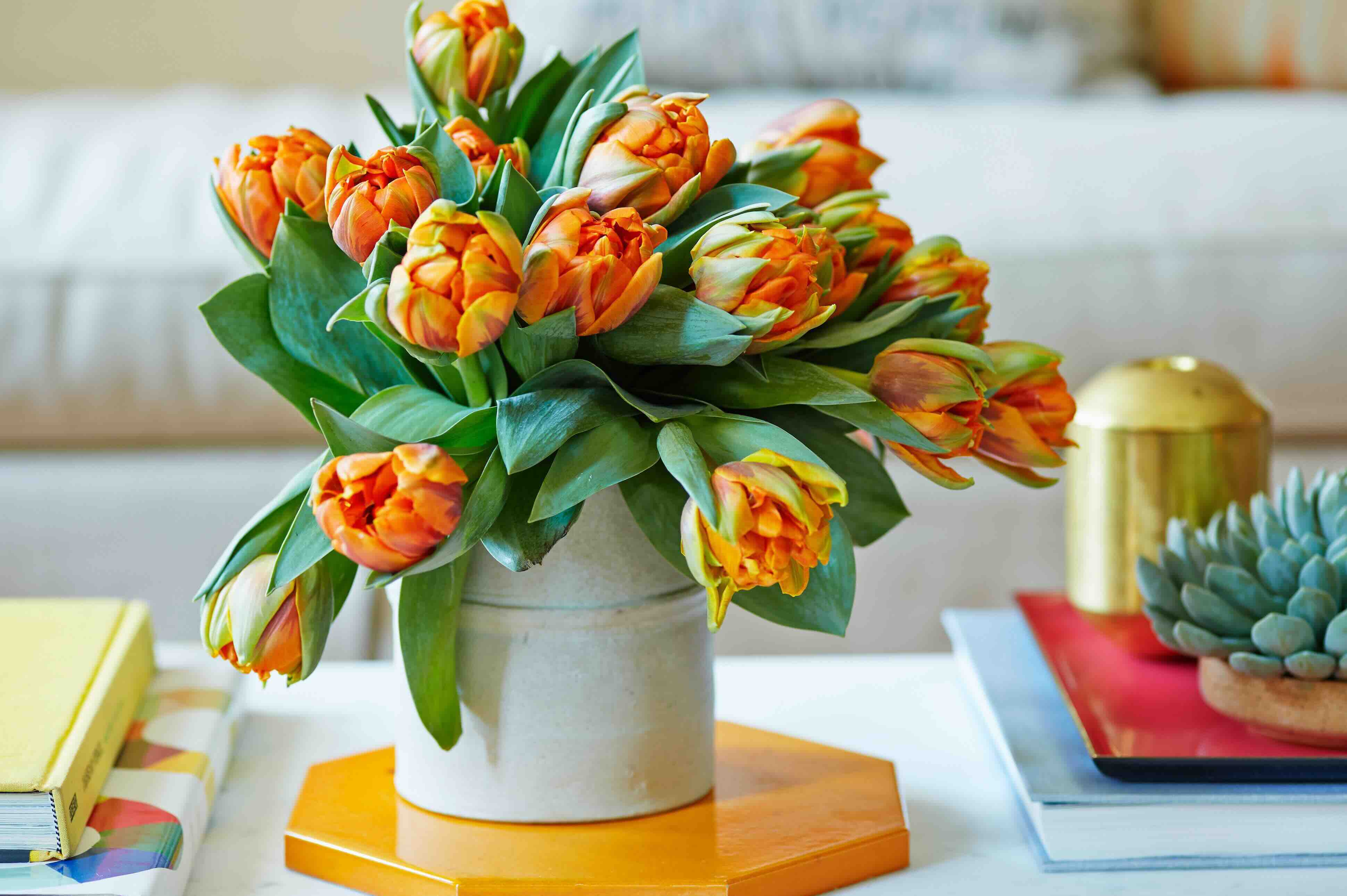

Garden Essentials
What Greenery Goes With Tulips
Modified: August 29, 2024
Discover the perfect combination of greenery for your garden with tulips. Enhance your space with a variety of complementary plants that will beautifully complement your tulip blooms.
(Many of the links in this article redirect to a specific reviewed product. Your purchase of these products through affiliate links helps to generate commission for Storables.com, at no extra cost. Learn more)
Introduction
Gardening enthusiasts and flower lovers alike know the joy and beauty that tulips bring to any landscape or floral arrangement. These vibrant and elegant flowers come in various colors and have an unrivaled charm. However, to truly make tulips stand out, it’s essential to pair them with the right greenery. The right combination of greenery can enhance the overall aesthetic appeal and create a visually stunning display.
Choosing the right greenery to complement tulips requires careful consideration of factors such as color, texture, and shape. The greenery serves as a backdrop, providing contrast and highlighting the beauty of the tulips. Whether you’re designing a garden bed, a bouquet, or a floral centerpiece, selecting the appropriate greenery will make all the difference.
In this article, we will explore various options for greenery that pair exceptionally well with tulips. From delicate ferns to elegant eucalyptus, we will delve into the characteristics of different types of foliage and how they can enhance the beauty of your tulip arrangements. So, let’s dive in and discover the perfect greenery companions for your tulips!
Key Takeaways:
- Pairing the right greenery with tulips is essential for creating stunning floral arrangements. From delicate ferns to trailing ivy, each greenery option adds depth, contrast, and visual interest to the beauty of tulips.
- The choice of greenery can greatly enhance the beauty, texture, and overall aesthetic of tulips. Whether aiming for a romantic or structured look, selecting the right greenery will create visually captivating and harmonious floral arrangements.
Read more: What Greenery Goes With Eucalyptus
The Importance of Choosing the Right Greenery
When it comes to floral displays, the greenery plays a crucial role in enhancing the overall aesthetic appeal. It acts as a supporting character, complementing and highlighting the main attraction – in this case, the tulips. Choosing the right greenery is essential to create a harmonious and visually pleasing arrangement.
One of the key reasons for selecting the right greenery is to provide contrast. Tulips come in a wide range of colors, from bold and vibrant hues to soft pastels. By pairing them with the right greenery, you can create a striking contrast that accentuates the beauty of the tulips. The green foliage acts as a neutral canvas, allowing the colors of the tulips to pop and stand out.
In addition to contrast, greenery also adds texture and depth to floral arrangements. The leaves and foliage of different plants come in various shapes and sizes, providing an extra layer of visual interest. For example, ferns have delicate and feathery fronds, while eucalyptus leaves are characterized by their elongated, slender structure. By incorporating different textures into the arrangement, you create a dynamic and visually captivating display.
The choice of greenery also affects the overall mood and style of the arrangement. It can evoke different feelings and set a specific tone. For a romantic and whimsical vibe, delicate and trailing greenery like baby’s breath or ivy can be an excellent choice. On the other hand, if you’re aiming for a more structured and formal look, foliage with bold shapes and textures such as hosta leaves or dusty miller would be more suitable.
Furthermore, greenery can also serve a practical purpose. It can act as a filler, adding volume and fullness to the arrangement. This is especially useful when working with limited quantities of tulips or to create a more budget-friendly display. The right greenery can help create a visually pleasing composition, even if you have fewer tulips to work with.
Overall, choosing the right greenery is essential to create a well-balanced and visually appealing display. It enhances the beauty of the tulips, adds depth and texture, sets the mood, and serves a practical purpose. By carefully selecting the greenery that complements your tulips, you can create stunning arrangements that will captivate all who see them.
Complementary Greenery Options for Tulips
Now that we understand the importance of selecting the right greenery, let’s explore some of the best options that complement tulips and enhance their beauty. These greenery choices provide a range of colors, textures, and shapes to create unique and visually captivating arrangements. Here are ten complementary greenery options for tulips:
-
Ferns
Ferns are a classic choice for pairing with tulips. Their delicate and feathery fronds add a touch of elegance and create a soft backdrop for the vibrant tulips. Ferns come in different varieties, such as maidenhair ferns or Boston ferns, each contributing its distinct charm to the arrangement.
-
Eucalyptus
Eucalyptus has gained immense popularity in floral arrangements due to its refreshing scent and stunning appearance. The elongated, silver-green leaves of eucalyptus provide a contemporary and sophisticated touch. They create an interesting contrast with the tulip’s colorful blooms, making them an excellent choice for modern and minimalist designs.
-
Read more: What Greenery Goes With Calla Lilies
Baby’s Breath
As a delicate and airy filler, baby’s breath adds a whimsical and romantic touch to tulip arrangements. The tiny white flowers create a soft cloud-like effect, beautifully complementing the tulip’s vibrant colors. Incorporating baby’s-breath can add volume and create an ethereal look to your floral displays.
-
Seeded Eucalyptus
If you’re looking to add a unique texture and visual interest, seeded eucalyptus is an excellent choice. Its silver-blue leaves are adorned with small seed pods, which add a charming and rustic element to the arrangement. Seeded eucalyptus creates a beautiful contrast against the smooth petals of tulips.
-
Salal Leaves
Salal leaves are known for their vibrant green color and glossy appearance. These versatile foliage stems add depth and a lush feel to tulip arrangements. Salal leaves work well with both pastel and bold tulip colors, making them a versatile greenery option.
-
Dusty Miller
Dusty miller is a popular choice for adding a silvery-gray hue to floral displays. Its lacy and textured leaves create a unique and visually appealing contrast with the vibrant tulips. Dusty miller brings a touch of elegance and sophistication to any arrangement.
-
Asparagus Fern
Asparagus fern is a charming foliage option with delicate and cascading stems. The soft and feathery foliage adds a graceful touch, particularly when combined with tulip blooms. Asparagus fern works beautifully in bouquets, hanging baskets, and floral arrangements that require a trailing element.
-
Lamb’s Ear
Lamb’s ear is known for its soft and fuzzy leaves that resemble the ears of a lamb. The velvety silver-gray foliage brings a unique texture and adds a touch of whimsy to tulip arrangements. Lamb’s ear pairs well with pastel-colored tulips, creating a gentle and charming composition.
-
Ivy
Ivy is a versatile greenery option that can be used as a trailing element or a filler in tulip arrangements. With its vigorous growth and cascading vines, ivy adds movement and a natural, organic feel to floral displays. Ivy leaves come in various shapes and shades of green, allowing for endless creative possibilities.
-
Hosta Leaves
Hosta leaves are prized for their bold and sculptural appearance. The large, textured leaves come in a range of colors, from deep green to variegated patterns. Hosta leaves add drama and a striking backdrop to tulip arrangements, making them a popular choice for creating impactful floral displays.
These ten greenery options provide a wide range of choices to complement and enhance the beauty of your tulips. By selecting the right greenery that harmonizes with the colors and style of your tulips, you can create unique and captivating floral arrangements.
Ferns
Ferns are a classic choice when it comes to complementing tulips in floral arrangements. Their delicate and feathery fronds add a touch of elegance and create a soft backdrop for the vibrant tulip blooms. Ferns come in different varieties, each with its own unique charm and characteristics, allowing for endless creative possibilities.
One popular fern variety that pairs exceptionally well with tulips is the maidenhair fern. Known for its fine and airy foliage, the maidenhair fern adds a sense of lightness and grace to any arrangement. The soft green hues of the fronds create a beautiful contrast against the bold and vibrant colors of tulips, making them stand out even more.
Another fern variety that works well with tulips is the Boston fern. With its arching fronds and lush appearance, the Boston fern adds a touch of volume and fullness to floral displays. Its vibrant green color provides a vibrant and fresh backdrop, creating a visually captivating composition when combined with tulips of various shades.
Ferns are versatile greenery options that can be used in various types of floral arrangements. Whether you’re designing a bouquet, a centerpiece, or a garden bed, ferns can add depth and visual interest. Their slender stems and delicate foliage allow for easy incorporation into different arrangements without overwhelming the beauty of the tulips.
One of the advantages of using ferns as complementary greenery for tulips is their ability to create a sense of movement. The feathery fronds sway gracefully, adding a dynamic element to arrangements. This movement can create a sense of naturalness and organic beauty, enhancing the overall aesthetic appeal.
When working with ferns, it’s essential to consider their care requirements. Ferns thrive in indirect or filtered light environments and prefer slightly moist soil. They are also known for their humidity-loving nature. Therefore, it’s important to provide adequate moisture and create a humid environment to keep the ferns looking fresh and vibrant alongside the tulips.
Incorporating ferns alongside tulips can create a harmonious and stunning floral display. The delicate and airy foliage of ferns adds a touch of elegance, enhances the colors of the tulips, and creates a visually captivating composition. Whether you’re creating a bouquet, a centerpiece, or a garden bed, ferns are an excellent choice to complement and enhance the beauty of your tulips.
Eucalyptus
Eucalyptus has become increasingly popular in floral arrangements for its refreshing fragrance and stunning appearance. When paired with tulips, eucalyptus adds a contemporary and sophisticated touch to the overall composition. Its long, slender leaves and subtle color variations create a visually striking contrast against the vibrant blooms of the tulips.
One of the main reasons eucalyptus is a great companion for tulips is its versatility. With various species available, each featuring distinct leaf shapes, sizes, and color variations, there is a wide range of options to choose from. The most commonly used eucalyptus for floral arrangements is silver dollar eucalyptus, which has round, silver-blue leaves that add an elegant and modern aesthetic.
When paired with tulips, eucalyptus creates a harmonious blend of color and texture. The soft, muted green of the eucalyptus leaves provides the perfect backdrop for showcasing the vibrant colors of the tulips. The elongated shape of the leaves adds a sense of movement and flow to the arrangement, creating a visually dynamic composition.
Another benefit of using eucalyptus as complementary greenery is its longevity. Eucalyptus leaves tend to dry and retain their shape and color even after they have been cut. This means that even after the tulips have wilted, the eucalyptus can continue to add visual interest and beauty to the arrangement.
In addition to its visual appeal, eucalyptus also brings a delightful fragrance to floral displays. The aromatic scent adds a refreshing and calming element to any room or outdoor setting. The combination of the earthy fragrance of eucalyptus with the sweet aroma of tulips creates a sensory experience that is both visually stunning and delightful to the nose.
Eucalyptus is also known for its symbolism and therapeutic properties. It is often associated with healing and purification, making it a meaningful addition to floral arrangements for special occasions or as a gift. The aromatic properties of eucalyptus can also promote relaxation and stress relief, enhancing the overall ambiance of any space.
When using eucalyptus in tulip arrangements, it is essential to consider proper care and handling. Eucalyptus branches should be placed in fresh water to keep them hydrated and extend their lifespan. As eucalyptus leaves are relatively sturdy and fibrous, they can last for several weeks if cared for properly.
Incorporating eucalyptus alongside tulips adds a touch of elegance, sophistication, and fragrance to floral arrangements. The combination of vibrant tulip blooms and the unique color and texture of eucalyptus leaves creates a visually stunning display. Whether you’re creating a bouquet, a centerpiece, or a wreath, eucalyptus is a fantastic greenery choice that complements and elevates the beauty of tulips.
Baby’s Breath
When it comes to creating a soft and romantic feel in floral arrangements, baby’s breath is a perfect choice to pair with tulips. This delicate and airy filler flower adds a whimsical touch and enhances the beauty of tulips with its cloud-like clusters of tiny white flowers.
The dainty nature of baby’s breath makes it an ideal companion for tulips, as it complements the elegance and grace of these vibrant blooms. When combined, the delicate white flowers of baby’s breath create a stunning contrast against the bold colors of the tulips, making them pop even more.
One of the advantages of using baby’s breath as complementary greenery is its versatility. It can be used in various floral arrangements, from bouquets to centerpieces, and even as a decorative element in hanging installations. Its small, delicate flowers create a sense of fullness and volume without overwhelming the tulips.
In addition to its aesthetic appeal, baby’s breath also carries symbolic meanings. It is often associated with purity, innocence, and everlasting love, making it an ideal choice for wedding bouquets or romantic floral displays. The ethereal and delicate nature of baby’s breath creates a sense of dreaminess and romance when paired with tulips.
Another practical advantage of using baby’s breath is its longevity. Even after the tulips have started to wilt, the baby’s breath often retains its shape and color, extending the overall lifespan of the arrangement. This makes it a cost-effective choice for floral designs while still maintaining a beautiful and cohesive look.
When working with baby’s breath, proper care and handling are essential to ensure its longevity. To keep them fresh, trim the stems and place them in a clean vase filled with fresh water. Baby’s breath tends to thrive in a cool environment, so avoid exposing it to direct sunlight or sources of heat.
Although baby’s breath is traditionally associated with white flowers, it is now available in various colors, including pale pink and lavender. This allows for even more creative possibilities when combining it with tulips of different shades, creating a visually stunning and personalized arrangement.
Incorporating baby’s breath alongside tulips adds a romantic and whimsical element to floral displays. The delicate clusters of white flowers create a soft and dreamy backdrop for the bold colors of the tulips. Whether you’re designing a wedding bouquet, a centerpiece, or a floral arrangement for a special occasion, baby’s breath is a charming greenery option that enhances the beauty and elegance of tulips.
Seeded Eucalyptus
Seeded eucalyptus is a unique and visually captivating greenery option that pairs exceptionally well with tulips. With its elongated stems, silver-blue leaves, and clusters of seed pods, seeded eucalyptus adds a rustic and charming touch to any floral arrangement.
One of the distinct features of seeded eucalyptus is its texture. The leaves have a leathery feel and a subtle grayish-blue color, which adds depth and visual interest to the arrangement. The clustered seed pods, often resembling tiny berries, create a whimsical and slightly rustic element that beautifully complements the vibrant colors of tulips.
Seeded eucalyptus serves as an excellent filler and adds volume to floral displays. The long, cascading stems create a soft and flowing effect when combined with tulips. This allows for a more dynamic and visually pleasing arrangement, as the eucalyptus gracefully weaves through the tulip blooms.
When pairing seeded eucalyptus with tulips, it’s important to consider the overall color scheme. The soft and muted tones of the eucalyptus leaves provide a beautiful contrast against the bright and bold colors of the tulips. This contrast allows the tulips to stand out while adding an element of sophistication and natural beauty to the arrangement.
Seeded eucalyptus not only adds visual appeal but also brings a pleasant fragrance to floral displays. When combined with the sweet scent of tulips, the aromatic blend creates a sensory experience that is both visually captivating and delightful to the nose. The fragrance of seeded eucalyptus adds a refreshing and calming element to any room or outdoor setting.
One of the advantages of using seeded eucalyptus is its longevity. The leaves and seed pods tend to dry beautifully and retain their shape and color even after they have been cut. This means that even as the tulips begin to fade, the seeded eucalyptus can continue to add visual interest and beauty to the arrangement.
When working with seeded eucalyptus, be sure to trim the stems and place them in a clean vase with fresh water. Like other eucalyptus varieties, seeded eucalyptus benefits from being in a cool environment and should be kept away from direct sunlight or heat sources to maintain its freshness.
Incorporating seeded eucalyptus alongside tulips can create a charming and rustic floral display. The unique texture, silver-blue leaves, and clustered seed pods of seeded eucalyptus add depth and visual interest to arrangements, enhancing the beauty of tulips. Whether you’re designing a bouquet, a centerpiece, or a wreath, seeded eucalyptus is a fantastic greenery choice that complements and elevates the overall aesthetic of tulips.
Read more: What Greenery Goes Well With Baby’s Breath
Salal Leaves
Salal leaves, known for their vibrant green color and glossy appearance, are an excellent greenery option to pair with tulips. These versatile foliage stems add depth, texture, and a lush feel to floral arrangements, enhancing the overall beauty of tulips.
The glossy and leathery texture of salal leaves provides an interesting contrast to the smooth petals of tulip blooms. This contrast creates a visually stunning composition and allows the tulips to stand out as the focal point of the arrangement.
Salal leaves come in various shapes and sizes, making them a versatile choice for different floral designs. The foliage can be used as a filler to add volume and fullness to the arrangement or as a backdrop to create a lush and abundant look.
One of the main advantages of using salal leaves as complementary greenery is their longevity. Salal leaves have a good shelf life and tend to stay fresh for an extended period, even after the tulips have started to fade. This makes salal leaves a cost-effective option as they can continue to add beauty to the arrangement long after the tulips have wilted.
Salal leaves are also popular for their deep green color. This vibrant hue adds a lush and lively element to floral displays, especially when combined with a variety of tulip colors. Whether you’re working with pastel shades or bold hues, salal leaves beautifully complement the colors of tulips, adding a cohesive and harmonious look to the arrangement.
In addition to their visual appeal, salal leaves are often used as a symbol of good luck and protection. Including salal leaves in your tulip arrangements can bring a positive and fortunate energy to the setting. This makes them an ideal choice for special occasions such as weddings, where symbolism and meaning play a significant role.
When working with salal leaves, it’s essential to ensure proper care and handling. Trim the stems diagonally and place them in a clean vase filled with fresh water. Salal leaves benefit from being misted with water regularly to maintain their glossy appearance and freshness.
Incorporating salal leaves alongside tulips adds depth, texture, and vibrant color to floral displays. The glossy foliage enhances the beauty of tulips and creates a lush and abundant look. Whether you’re creating a bouquet, a centerpiece, or a garden bed, salal leaves are a fantastic greenery choice that complements and elevates the overall aesthetic of tulips.
Dusty Miller
Dusty Miller, with its unique silvery-gray foliage, is an excellent choice for adding texture and visual interest to tulip arrangements. The lacy and velvety leaves of Dusty Miller create a distinct contrast against the vibrant colors of the tulip blooms, making them stand out even more.
The soft, downy texture of Dusty Miller leaves adds depth and a touch of elegance to floral designs. The silvery-gray color of the foliage brings a cool and sophisticated aesthetic to the arrangement, creating a calming and refined atmosphere.
One of the advantages of using Dusty Miller as complementary greenery is its versatility. It works well in both formal and informal floral displays. For formal arrangements, the fine and intricate leaves of Dusty Miller provide a level of sophistication and can create a structured and elegant look. In more relaxed or rustic designs, Dusty Miller adds a touch of whimsy and a natural, organic feel.
Another benefit of Dusty Miller is its long vase life. The leaves tend to hold up well, even after being cut. This means that Dusty Miller can continue to add visual interest and beauty to the arrangement, even after the tulips have started to fade.
Dusty Miller is a great choice for creating contrasting color schemes in floral arrangements. Its silver-gray foliage pairs beautifully with a wide range of tulip colors, including both pastel and bold shades. This versatility allows for endless creative possibilities and ensures that Dusty Miller can complement any tulip arrangement, regardless of the chosen color palette.
When working with Dusty Miller, it’s essential to handle the delicate leaves with care. Avoid excessive handling that could damage or crush the foliage. Trim the stems at an angle before placing them in a clean vase filled with fresh water. With proper care, Dusty Miller can last for an extended period, providing long-lasting beauty to your tulip arrangements.
Incorporating Dusty Miller alongside tulips brings a unique texture, color contrast, and a touch of elegance to floral displays. The silvery-gray foliage creates a visually appealing composition and enhances the overall aesthetic of tulips. Whether you’re designing a bouquet, a centerpiece, or a garden bed, Dusty Miller is an excellent greenery choice that complements and elevates the beauty of tulips.
Asparagus Fern
Asparagus Fern is a charming and versatile greenery option that pairs beautifully with tulips. Its delicate and cascading stems, covered in lush, feathery foliage, add a graceful touch to floral arrangements. Asparagus Fern works exceptionally well in bouquets, hanging baskets, and floral displays that require a trailing or cascading element.
One of the unique characteristics of Asparagus Fern is its fine, needle-like foliage. The bright green fronds create a soft and airy texture that brings a sense of lightness and movement to the arrangement. This adds a whimsical and graceful element alongside the bold and vibrant tulip blooms.
When paired with tulips, the delicate foliage of Asparagus Fern provides a striking contrast against the sturdy and smooth petals of the flowers. This contrast creates a visually appealing composition that enhances the beauty of both the fern and the tulips.
The arching and trailing nature of the Asparagus Fern stems allows them to drape gracefully over the tulip blooms. This creates a sense of depth and dimension in the arrangement, making it more visually captivating. The cascading effect adds a touch of romance and brings a natural, organic feel to the overall composition.
In addition to their aesthetic appeal, Asparagus Fern is relatively low maintenance, making them an ideal choice for floral displays. They tolerate different light conditions and can thrive in both indoor and outdoor environments. Asparagus Fern also retains moisture well, which helps to prolong the lifespan of the arrangement, even if the tulips start to wilt.
It’s important to note that Asparagus Fern has thorns on its stems, so handling them with care is necessary to avoid any injuries. When incorporating Asparagus Fern into your tulip arrangements, trim the stems at an angle and place them in a clean vase filled with fresh water. Mist the foliage regularly to maintain its freshness and overall health.
Incorporating Asparagus Fern alongside tulips adds a touch of grace, texture, and movement to floral displays. The delicate and cascading foliage creates a visually captivating composition and enhances the overall beauty of the tulips. Whether you’re designing a bouquet, a hanging arrangement, or a centerpiece, Asparagus Fern is an excellent greenery choice that complements and elevates the aesthetic of tulips.
Lamb’s Ear
Lamb’s Ear is a unique and charming greenery option that adds a touch of whimsy and texture to tulip arrangements. Known for its soft and velvety grayish-green leaves, Lamb’s Ear brings a delightful and distinctive element to floral displays. Its appearance and texture make it a standout choice for adding interest and depth to any arrangement.
The velvety texture of Lamb’s Ear leaves is unlike any other foliage, creating a tactile and sensory experience. When paired with the smooth petals of tulip blooms, the contrast in texture adds visual interest and intrigue to the arrangement. The soft, silver-gray hues of the leaves also create a gentle and calming effect, enhancing the overall aesthetic of tulips.
In addition to its unique texture, Lamb’s Ear leaves are known for their elongated, oval shape, resembling the ears of a lamb. The whimsical, ear-like appearance adds a playful and whimsical element to the arrangement. This can make it a fantastic choice for creating arrangements with a touch of creativity and personality.
Lamb’s Ear works well in various floral designs, from bouquets to centerpieces and wreaths. Its elongated stems allow for easy incorporation into different arrangements, creating interesting lines and adding volume without overwhelming the tulips. The versatility of Lamb’s Ear makes it a popular choice for both formal and informal floral displays.
Another advantage of Lamb’s Ear is its long-lasting nature. Even as the tulips start to fade, the Lamb’s Ear leaves retain their shape and texture, extending the overall lifespan of the arrangement. This makes Lamb’s Ear a cost-effective and practical choice, as it continues to provide visual interest and beauty long after the tulips have wilted.
When working with Lamb’s Ear, it’s important to handle the leaves gently and avoid excessive handling that could damage the velvety texture. Trim the stems at an angle before placing them in a clean vase with fresh water. With proper care, Lamb’s Ear leaves can last for an extended period, allowing you to enjoy their beauty alongside the tulips.
Incorporating Lamb’s Ear alongside tulips adds whimsy, texture, and a touch of playfulness to floral displays. The unique velvety leaves create a visually captivating composition and enhance the overall aesthetic of tulips. Whether you’re designing a bouquet, a centerpiece, or a wreath, Lamb’s Ear is an excellent greenery choice that complements and elevates the beauty and charm of tulips.
Ivy
Ivy, with its trailing vines and lush foliage, is a versatile greenery choice that complements tulips in various floral arrangements. Known for its vigorous growth and cascading habit, ivy adds movement, texture, and a touch of natural beauty to the overall composition.
The vibrant green leaves of ivy create a beautiful backdrop for tulip blooms, allowing them to take center stage. The glossy foliage provides a fresh and vibrant contrast against the vibrant colors of tulips, accentuating their beauty and creating a visually captivating display.
Ivy is a fantastic choice for adding depth and dimension to floral designs. Its trailing vines can be used to create a cascading effect, incorporating a vertical element in a bouquet or arrangement. This adds both visual interest and an organic, flowing feel to the composition.
Another advantage of using ivy is its ability to fill in empty spaces and provide a lush, abundant look. As a filler greenery, ivy can create fullness and volume in floral arrangements, making them appear more substantial and cohesive. It can be placed strategically around tulips to add texture, fill gaps, or even create a natural-looking base for the arrangement.
Ivy is not only visually appealing but also quite hardy and long-lasting. It can withstand different environments, both indoors and outdoors, and tends to retain its freshness for extended periods. This means that even as the tulips begin to fade, the ivy will continue to add beauty and aesthetic value to the arrangement.
When working with ivy, it is important to note that it can grow quickly and may require occasional trimming to maintain the desired length and shape. Ivy stems should be trimmed back regularly to keep their growth in check and prevent them from overpowering the tulips.
Incorporating ivy alongside tulips adds movement, texture, and a touch of natural beauty to floral displays. The trailing vines and lush foliage of ivy create a visually captivating composition, enhancing the overall aesthetic of the tulips. Whether you’re designing a bouquet, a centerpiece, or a hanging arrangement, ivy is a wonderful greenery choice that complements and elevates the beauty of tulips.
Consider pairing tulips with greenery such as eucalyptus, ferns, or salal to create a beautiful and balanced floral arrangement. These types of greenery complement the delicate and vibrant nature of tulips.
Hosta Leaves
Hosta leaves are a fantastic greenery option to pair with tulips, offering bold shapes and striking textures that add drama and visual interest to floral arrangements. These large, sculptural leaves come in a range of colors and patterns, making them a versatile choice to complement the vibrant blooms of tulips.
One of the remarkable characteristics of hosta leaves is their size. The large leaves create a strong visual impact and serve as a striking backdrop for the tulip blooms. Their bold presence adds a sense of drama and elegance to the overall arrangement.
In addition to their size, hosta leaves also feature unique shapes and patterns. Some hosta varieties have heart-shaped leaves, while others have elongated or rounded forms. The leaves may be solid green or exhibit variegated patterns with different shades of green, yellow, or white. These varying shapes and patterns allow for creative combinations with tulips of different colors and forms.
When paired with tulips, hosta leaves provide a wonderful contrast in texture. The smooth and glossy surface of the leaves complements the soft petals of the tulip blooms. This contrast in texture adds depth and dimension to the arrangement, enhancing the overall visual appeal.
The versatility of hosta leaves makes them suitable for a variety of floral designs. They work well as a filler to add volume and fullness to the arrangement, or as a base to create a lush and abundant look. Hosta leaves can also be used to create a structured and formal appearance, adding a touch of sophistication to the tulip arrangement.
Another benefit of using hosta leaves is their longevity. Hosta leaves tend to hold up well even as the tulips start to fade. They retain their shape and color over time, allowing the arrangement to maintain its visual appeal and interest. This makes hosta leaves a cost-effective choice, as they continue to bring beauty to the arrangement longer.
When handling hosta leaves, it’s important to keep in mind that they are quite sturdy and can be prone to wilting if not properly hydrated. Trim the stems at an angle and place them in a clean vase with fresh water. Mist the leaves regularly to maintain their freshness and ensure optimal hydration.
Incorporating hosta leaves alongside tulips adds drama, texture, and a touch of sophistication to floral displays. The bold shapes and unique patterns of hosta leaves create a visually captivating composition, enhancing the overall aesthetic of the tulips. Whether you’re designing a bouquet, a centerpiece, or a garden bed, hosta leaves are an excellent greenery choice that complements and elevates the beauty of tulips.
Conclusion
Selecting the right greenery is essential when creating floral arrangements with tulips. The choice of complementary foliage can greatly enhance the beauty, texture, and overall aesthetic of the tulips. From delicate ferns to trailing ivy, each greenery option brings its own unique characteristics that add depth, contrast, and visual interest to the arrangements.
In this article, we explored ten different greenery options that pair exceptionally well with tulips. Ferns, with their delicate and feathery fronds, create an elegant backdrop for tulip blooms. Eucalyptus, with its refreshing fragrance and slender leaves, adds a contemporary and sophisticated touch to arrangements. Baby’s Breath, with its airy clusters of tiny white flowers, brings a whimsical and romantic element. Seeded eucalyptus, with its silver-blue leaves and charming seed pods, adds texture and rustic charm. Salal leaves, with their vibrant green color and glossy appearance, provide a lush and fresh backdrop. Dusty Miller, with its silvery-gray foliage, creates a visually striking contrast. Asparagus fern, with its cascading stems, adds grace and movement. Lamb’s Ear, with its soft and velvety leaves, adds texture and a touch of playfulness. Ivy, with its trailing vines, adds a natural and organic element. Lastly, hosta leaves, with their bold shapes and striking textures, bring drama and sophistication to floral arrangements.
Each greenery option discussed has its own unique characteristics and can be used to create various styles and moods in floral designs. Whether you’re aiming for a romantic and whimsical look or a structured and formal arrangement, there is a complementary greenery choice that will beautifully enhance your tulips.
Remember to consider factors such as color, texture, shape, and overall style when selecting the right greenery to pair with tulips. Pay attention to the care requirements of each foliage option to ensure that they stay fresh and vibrant alongside the tulips.
By selecting the right greenery, you can create stunning floral arrangements that highlight the beauty of tulips and bring an added element of visual interest. Whether you’re creating bouquets, centerpieces, or garden beds, experimenting with different greenery options will help you discover exciting and harmonious combinations that showcase the beauty of tulips in a truly breathtaking way.
Ready to freshen up your garden with vibrant blooms? Dive into our guide on spring flowers for a fresh & lively feel, perfect for anyone looking to add a splash of color this season. Curious about the basics of plant cultivation? Our what is garden article offers a simple, straightforward breakdown. For those considering some boundary creativity, check out our innovative landscaping ideas for garden fences that can transform your outdoor space.
Frequently Asked Questions about What Greenery Goes With Tulips
Was this page helpful?
At Storables.com, we guarantee accurate and reliable information. Our content, validated by Expert Board Contributors, is crafted following stringent Editorial Policies. We're committed to providing you with well-researched, expert-backed insights for all your informational needs.


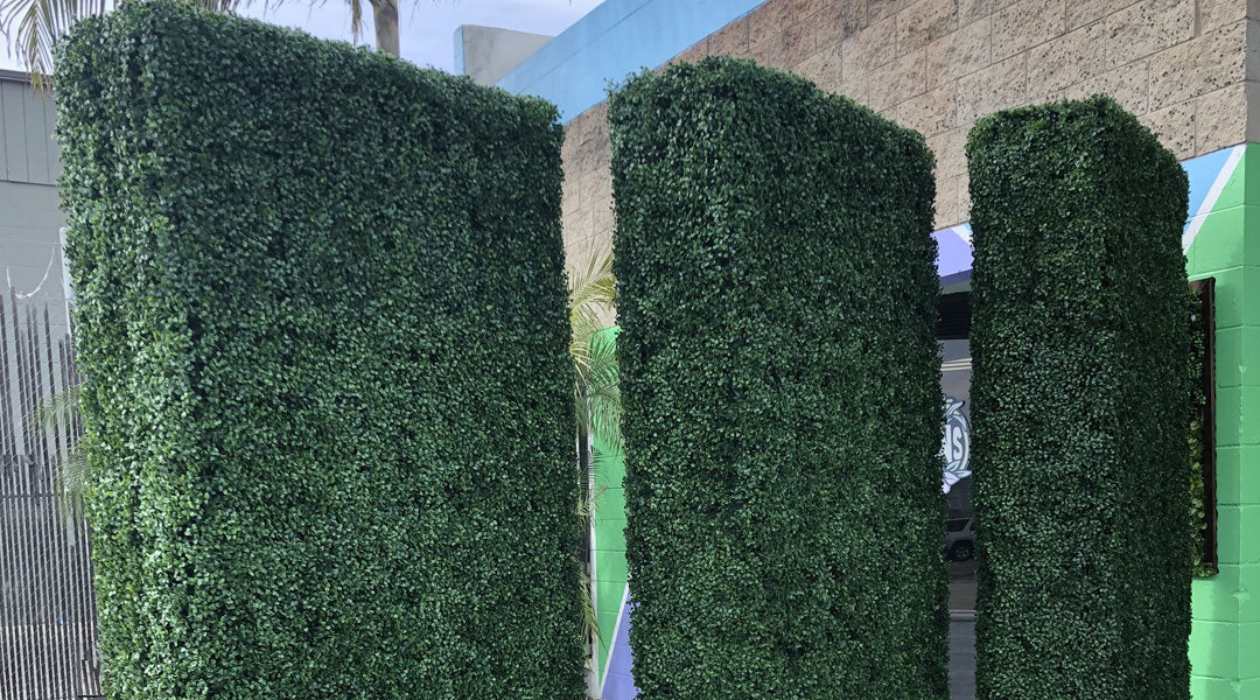
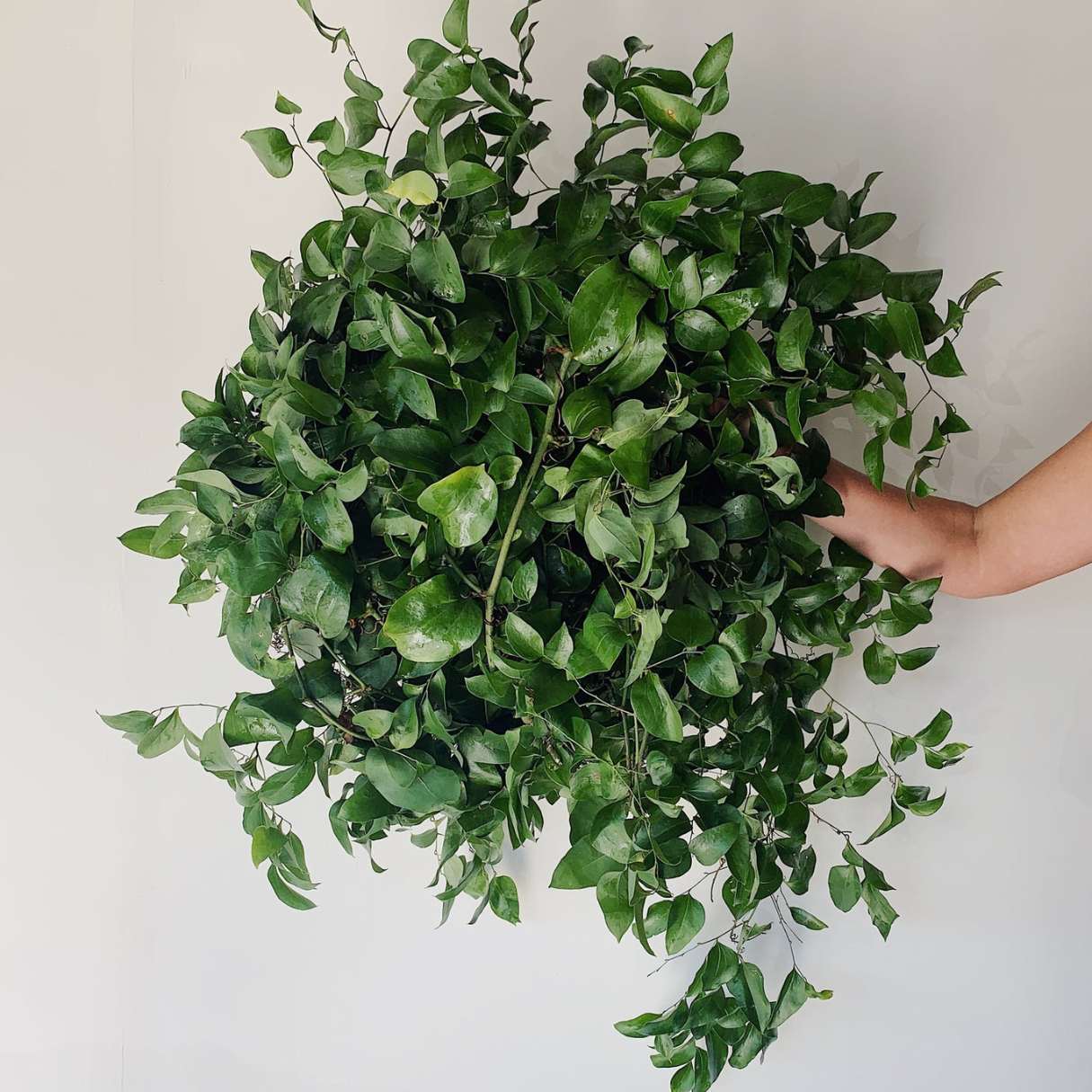
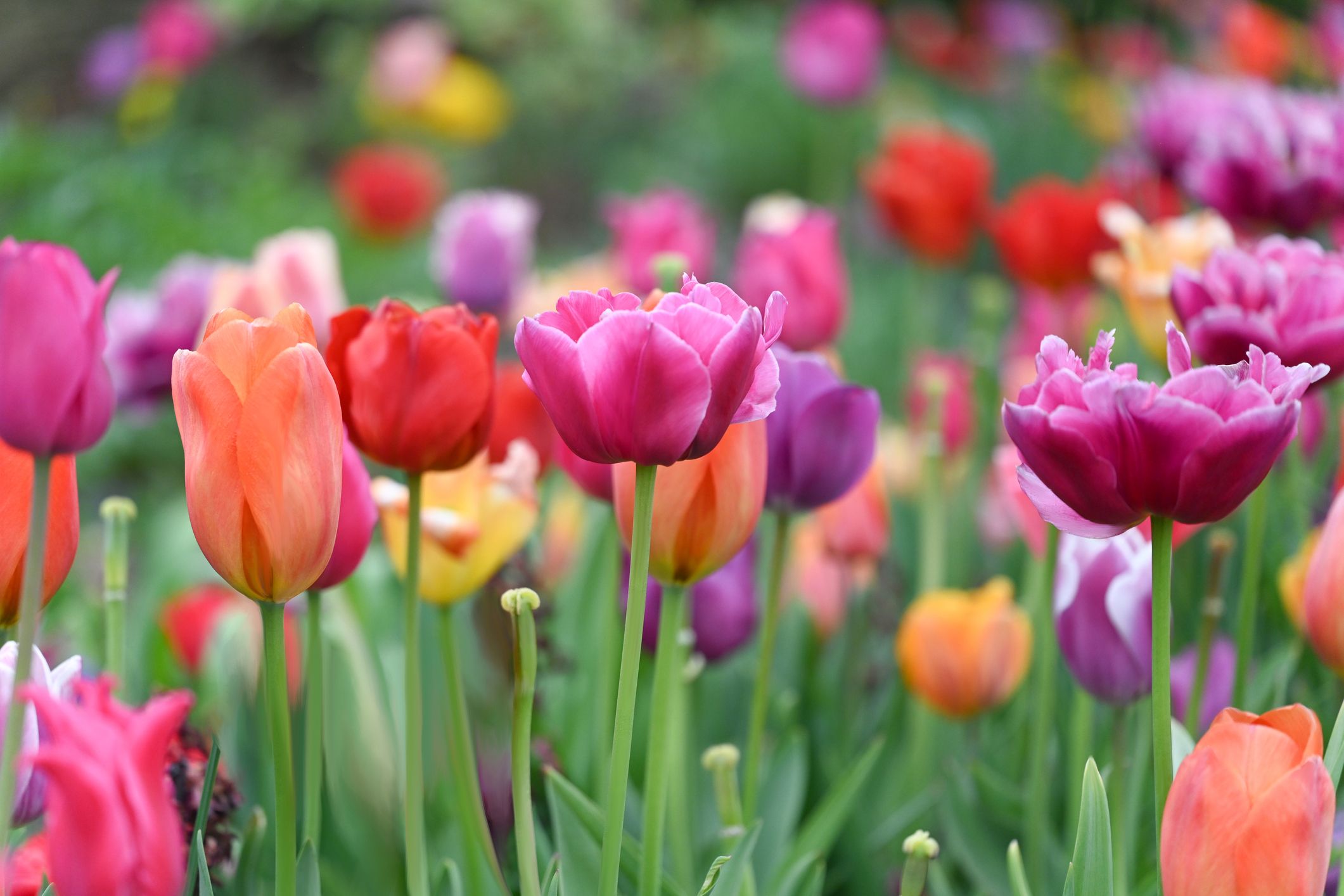
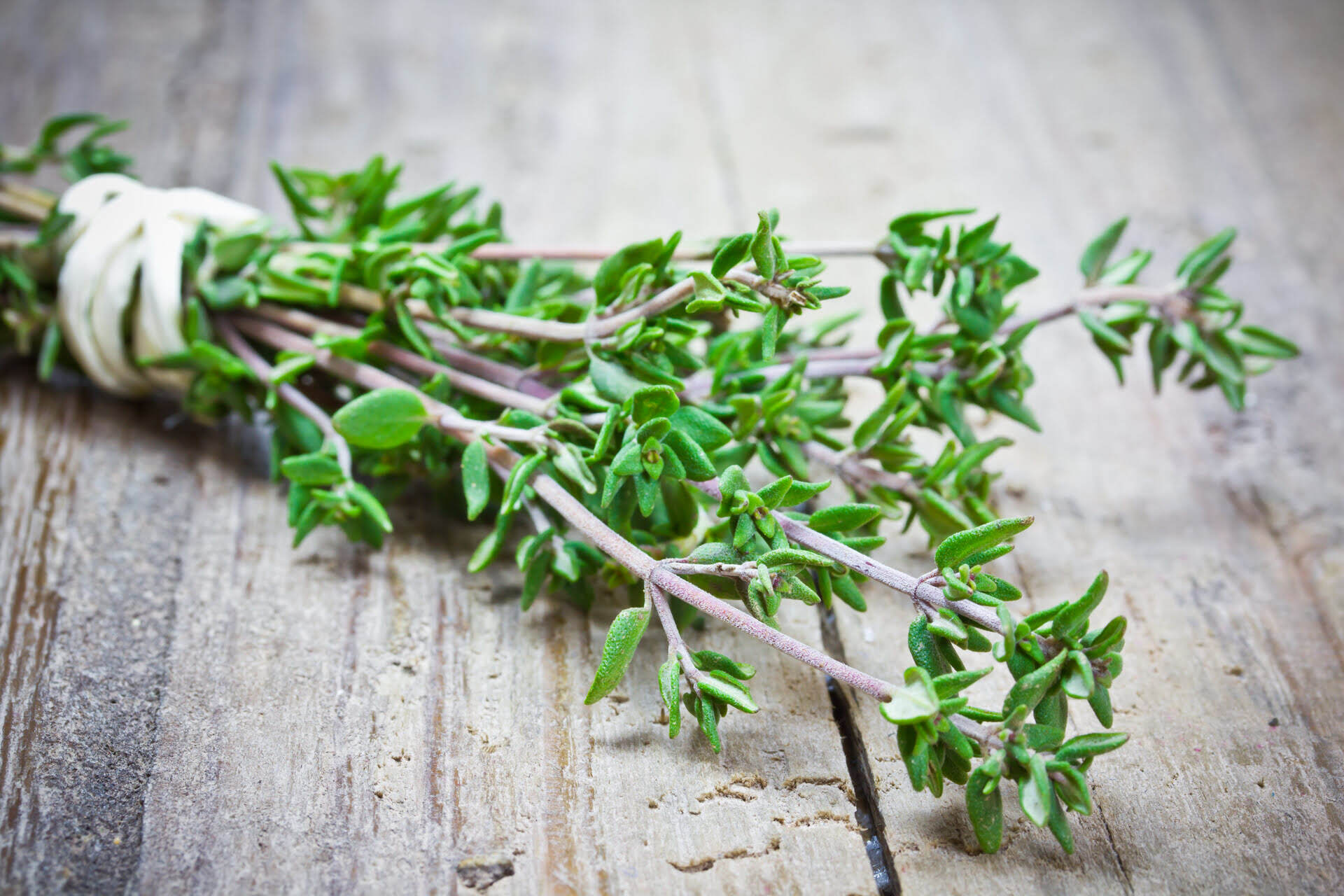


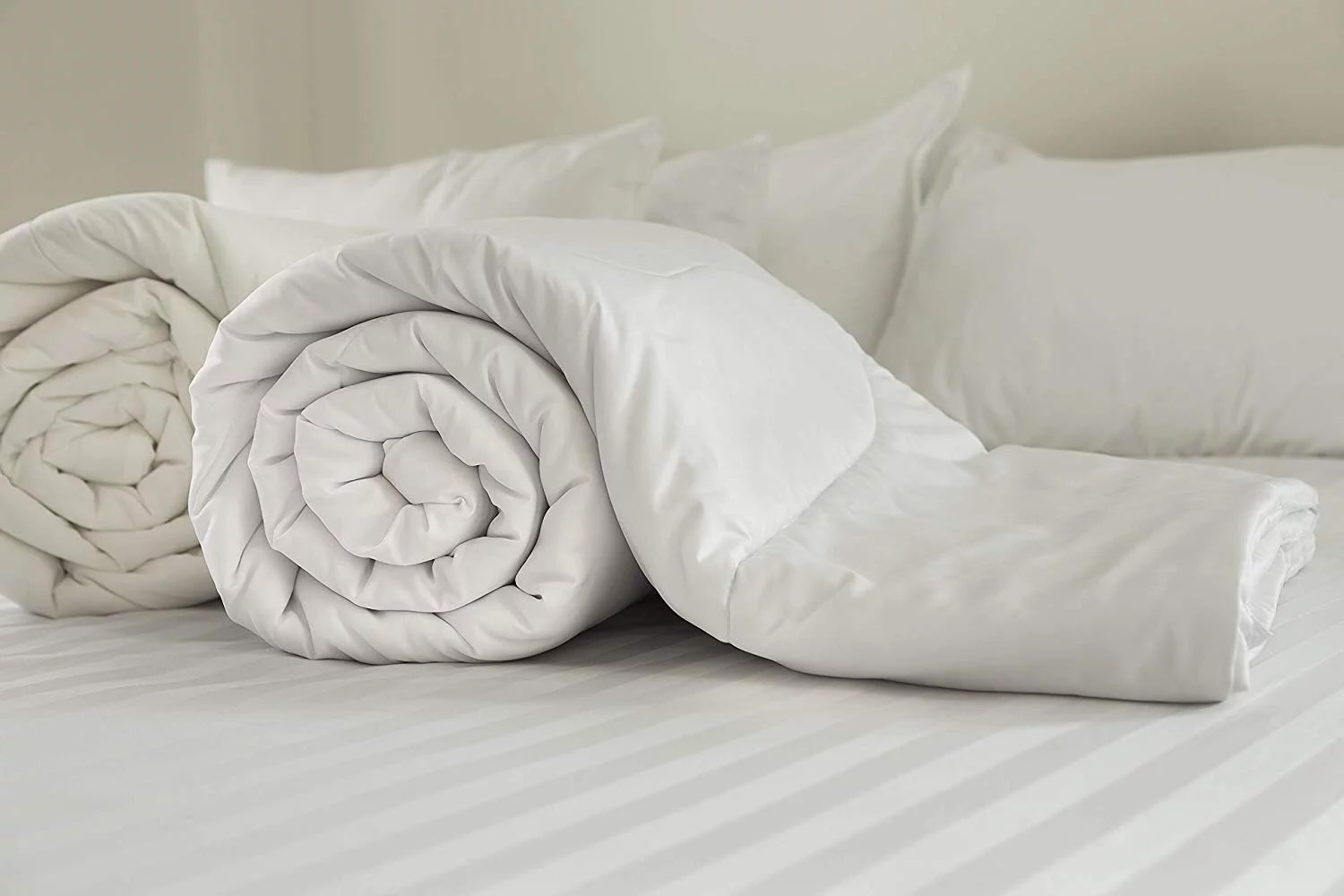


0 thoughts on “What Greenery Goes With Tulips”